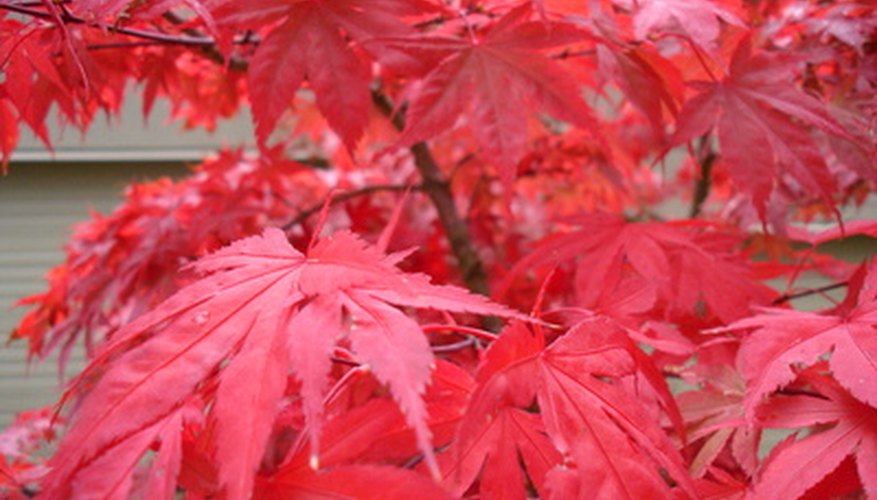With a rich history of symbolism, the Japanese maple tree has played an important part in Asian art, gardening and even poetry for hundreds of years. Actuality a large Asian shrub, the Japanese maple tree features foliage that turns attractive shades of deep red and purple each spring and fall.
- With a rich history of symbolism, the Japanese maple tree has played an important part in Asian art, gardening and even poetry for hundreds of years.
Peace and Serenity
Japanese maple trees have been considered a symbol of grace personified by many Asian cultures for hundreds of years. Associated with peace and serenity of the world's elements, Japanese maple trees represent balance and practicality and are called "kito" in the Japanese language, which means "calm," "rest" or "at peace."
Beauty and Magnificance
The expansive, horizontal branches and bright red foliage of the Japanese maple tree inspire awe and reverence in tree lovers the world over. The tree represents pure elegance and an educated sense of tastefulness, and makes an excellent addition to gardens of any size. So revered is the Japanese maple tree for its striking beauty and rich colours that an entire field of art has been dedicated to the Asian shrub.
Arrival of Autumn
Planting a Japanese maple tree in your garden traditionally symbolises the welcoming of autumn as a friend. The Japanese phrase "momiki-gari" translates to "maple viewing" or "maple hunting," which refers to the ritual visitation to the mountains each fall to view the brilliance of wild maple trees. In Asian art, star-shaped leaves of the Japanese maple trees are often paired with deer, as both are common symbols of the arrival of autumn.
